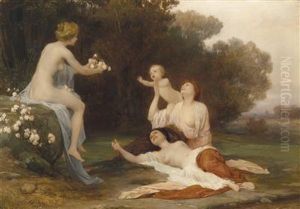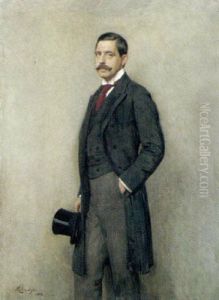Eduard Lebiedzki Paintings
Eduard Lebiedzki was an Austrian artist born in the year 1862, whose work primarily spanned the late 19th and early 20th centuries, a period marked by significant transformations in the arts across Europe. His contributions, though perhaps not as widely recognized as some of his contemporaries, hold a special place in the annals of Austrian art history, reflecting the nuanced shifts in style and perspective that characterized the fin-de-siècle period. Lebiedzki's oeuvre is noted for its versatility, embracing a variety of mediums including painting and graphic design, which allowed him to explore and express the aesthetic and cultural undercurrents of his time.
Lebiedzki's artistic journey was reflective of the broader artistic movements of his era, particularly the transition from traditional academic art to more modernist expressions. He was adept at capturing the spirit of Vienna's vibrant culture, embodying elements of Art Nouveau and Symbolism, movements that flourished in Europe towards the end of the 19th century. His work often depicted elegant figures, landscapes, and allegorical themes, imbued with a sense of emotion and psychological depth that was becoming increasingly prevalent in the art of the period.
Despite his talent and the quality of his work, Eduard Lebiedzki did not achieve the same level of fame as some of his contemporaries. Nevertheless, his contributions have been gradually recognized and appreciated over time, particularly in the context of Austrian art history. His paintings and graphic works are now considered important for understanding the transition of European art towards modernism during a time of great social and political change. Lebiedzki's death in 1915 marked the end of a career that was both reflective of its time and indicative of the shifts that would continue to shape Western art in the decades to follow. Today, his works can be found in various collections and museums, serving as a testament to his skill and artistic vision.




